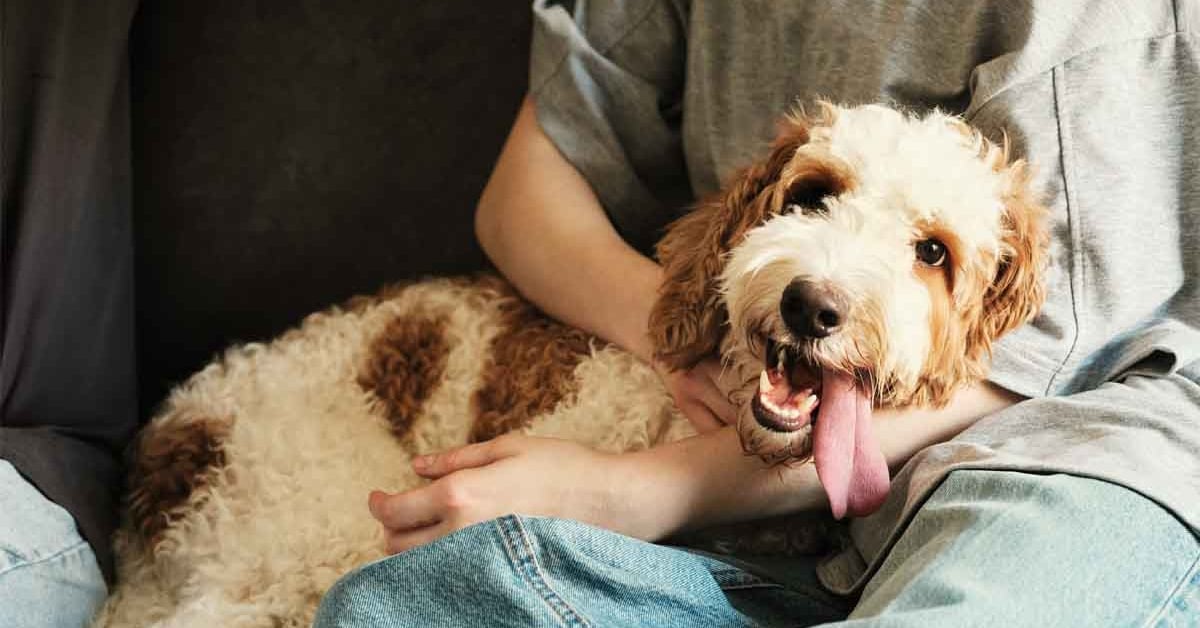The power of pets
Positive health outcomes from animal companionship doesn’t end at cats and dogs. Rabbits, for example, are easily trainable to be calming companions. Their soft fur invites cuddling, encouraging a high-touch situation that’s enjoyable for both the petter and the pet.
Watching the complex ecosystem of an aquarium is a hands-off and fur-free way to decompress after a long day at work, or at home with young kids. Quiet observation might be just the thing to calm nerves and feed your curiosity―another angle on the phenomenon that has been termed by experts as the “pet effect.”
Dogs as therapy is nothing new
Dogs were used in WWII to boost spirits of recovering soldiers with PTSD. A teacup Yorkshire Terrier called Smoky is the first official therapy dog on record. Her career began in 1944 in a New Guinea hospital where she accompanied nurses to meet wounded incoming soldiers.
Unexpected encounters of the calm kind
For some, travel is an art. But for the rest of us, organizing all the working parts of upcoming travel plans and being away in the heat of summer can be real anxiety-inducers, especially when you need to leave Spot at home with a dog-sitter.
While you’re away, though, random animal encounters can bring unexpected positive elements, no matter how unfamiliar your surroundings. Even a little bird watching on the piazza is an easy way to corral the whole family into mindful, active concentration, the first step toward being truly present.
Run, Spot, read
Your pet might not know his ABCs, but he could still help a self-conscious child learn to read. Read-to-dog programs in schools and libraries across Canada give kids with learning disabilities or developmental challenges the chance to practise reading to a nonjudgmental audience.
Sentient creatures shift thoughts from internal to external
“We are all so in our heads,” says Rosanne Johnson, a registered clinical counsellor who has practised equine therapy in Vancouver for a decade. “So much anxiety can be cured by a re-connection with the natural world.”
Johnson describes how the body language of horses gives patients access to vulnerable emotions which can, in turn, translate to healthier human relationships and behaviours. “Connections with others is the key to mental health. Some of my autistic patients are nonverbal, and when they learn to connect with the horse’s body language, it helps them build confidence in human interactions.”
Animal assisted therapy (AAT) has become more common for the treatment of complex mental health issues like grief, trauma, or PTSD. AAT demonstrates improved cognitive and emotional functioning for patients with autism spectrum disorders. To accommodate the varied experience and preferences of each patient, practitioners match animals of all kinds, including reptiles, to best suit patients.
Sentience as super power
The word “sentient” comes from the Latin sentire, which means “to feel.” Mammals, birds, and some invertebrates, like octopuses, are considered able to experience pleasure, joy, pain, and distress―just like humans do.
Alleviating loneliness
Social isolation and loneliness pose serious mental health risks, especially for seniors. The more manageable care needs of smaller dog species or a cat can be a better match for mobility-challenged seniors while providing attentive, loyal companionship. A dog or a cat is not a replacement for human contact, but caring for a pet appears to greatly alleviate feelings of loneliness, providing a sense of purpose and needfulness.
Resortful pets
Farm animals are integrated features for guests at Hotel Saint Germain in Charlevoix, Quebec. Situated on an old dairy farm, guests can get close to a variety of penned animals that live on the acreage, including heritage cows, llamas, and goats, providing subjects of interest, curiosity, and entertainment for all generations.
Call Spot and he will come
When the commitment of ownership is overwhelming, many organizations across the country facilitate pet visitations to those who need a dose of unconditional love. Steve Jones is the executive director of a Canadian charity that coordinates hundreds of volunteers who bring animals into hospitals, hospices, and elder care facilities.
“Our work shows how excellent therapies sometimes come in the simplest form,” says Jones. Operating since 1982, the mandate of Pets and Friends is rooted in the belief that the joy of animal companionship translates to better mental health.
Many studies support his idea that even brief encounters can lower blood pressure and decrease stress, depression, and anxiety. Furry friends in the waiting room, for example, can be a welcome distraction to make the time pass more quickly, and a way to shift focus from worried inward thoughts to curious outward thinking.
Walk Spot and get some vitamin D for yourself
Walking the dog means walking yourself. A brisk stroll through your neighbourhood is enough to refresh your mind, body, and spirit, with the added hit of sunshine and vitamin D. You’ll thank Spot for the reminder to escape your desk, get outside, and move your body.
Press “paws” on pain
Studies have even shown that interaction with dogs can reduce the need for pain medication post-surgery in both children and adult patients. And let’s not forget the hospital staff: with overworked nurses across the country, a wagging tail can go a long way toward breaking up the gruelling demands of back-to-back shifts, bringing some unexpected joy into the workplace.
Reptiles for rehab?
Not everyone is scared of snakes. Many people with high social anxieties find comfort by handling snakes and tarantulas. These animals require patience and calm movement which helps alleviate fears and builds confidence.
This article was originally published in the July 2025 issue of alive magazine.


